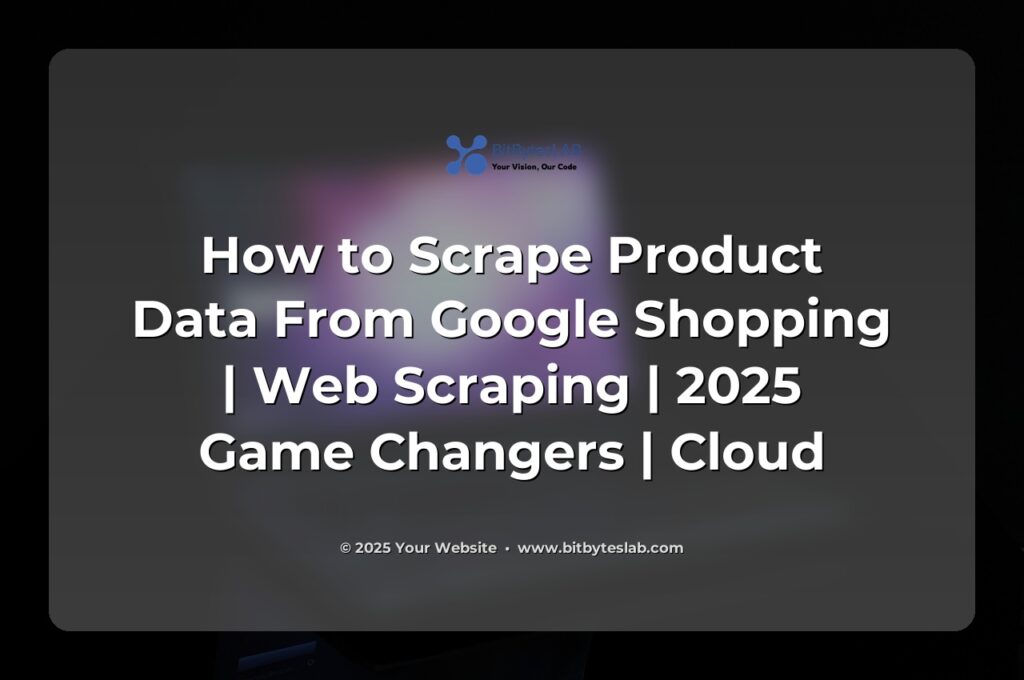⚡ A SQL query goes into a bar, walks up to two tables and asks… ‘Can I join you?’ 🍺

Web scraping isn’t just a technical skill—it’s a superpower for businesses navigating the 2025 e-commerce landscape. With over 40% of e-commerce data now unstructured and scattered across platforms, extracting actionable insights from Google Shopping is a game changer. But let’s face it: scraping dynamic, bot-resistant sites like Google Shopping feels like trying to herd cats. Literally. 🐱
Whether you’re tracking competitors, optimizing pricing, or analyzing consumer trends, this guide breaks down how to scrape Google Shopping effectively—while staying ahead of its evolving defenses. Let’s dive in. 🌟
Key Concepts: Decode Google Shopping’s Data Maze
At its core, web scraping is about understanding how websites serve data. Google Shopping uses a mix of static HTML and JavaScript-rendered content, often pulling product details from APIs. Think of it as a chameleon: it adapts its structure depending on your device, browser, and even your browsing history. 🎯
Here’s what you need to know:
- HTTP Protocols: Master GET/POST requests and interpret status codes. A 429 error? That’s Google telling you to slow down. 🚦
- DOM Architecture: Product names, prices, and descriptions are hidden in nested HTML tags. Use browser dev tools to map their “addresses.”
- Bot Detection: Google’s anti-scraping systems are like overzealous bouncers. Spoofing user agents and IP rotation are your VIP passes. 🛡️
And remember: Always respect `robots.txt`. It’s the website’s rulebook, and ignoring it? That’s a 99% chance of getting blocked. 💥
Expert Strategies: From Planning to Profit
Scraping Google Shopping isn’t about blasting through obstacles—it’s about finesse. Start by defining your goals. Are you tracking a niche market like smart home devices or comparing global pricing trends? Next, reverse-engineer their search endpoints. Use the browser’s Network tab to uncover API patterns, and test queries manually before automating. 🔧
For tools, Playwright or Selenium are your best bets—they mimic human interaction seamlessly. Need to scale? Pair them with proxy services like BrightData to avoid IP bans. Pro tip: Randomize delays between requests to blend in with regular traffic. 🕵️♂️
Once data is extracted, cleaning is where the rubber meets the road. Imagine trying to compare prices when “$99.99” has hidden typos or regional formatting. Tools like Pandas (Python) can normalize this, but don’t underestimate the value of regex for parsing messy fields. 🧹
2025 Trends: The New Era of Web Scraping
In 2025, AI-powered scraping is the future. Imagine NLP models that can turn unstructured product descriptions into clean, categorized metadata. Meanwhile, decentralized scraping networks are rising—using blockchain-based infrastructure to avoid centralized bot detection. 🌐
But Google isn’t sleeping. Their reCAPTCHA v3 and AI-driven bot scoring systems are now blocking 30% of automated requests globally. To counter this, adopt headless browser techniques that simulate mouse movements and scroll behavior. Tools like Puppeteer or Playwright can help you mimic a real user down to the pixel. 📈
🤖 Why do programmers prefer dark mode? Because light attracts bugs! 🐛

Business Applications: Turn Data Into Dollars
Let’s talk ROI. Price monitoring tools using scraped data can reduce overstock costs by 18% for retailers. Affiliate marketers leverage scraped product comparisons to boost conversion rates by 25%. Even academic research on consumer behavior is getting a data-driven upgrade. 📊
- Competitor Intelligence: Track rivals’ pricing strategies in real time. Did a competitor lower the price on Bluetooth earbuds? Your scraper should shout it out before their next flash sale. 🔍
- Inventory Optimization: Identify out-of-stock patterns and allocate resources strategically. It’s like having a crystal ball for warehouses. 🔮
- Personalized Recommendations: Aggregate product reviews and sentiment data to build hyper-targeted marketing campaigns. 2025 shoppers expect 90% personalization—and you can deliver. 💡
If you’re in retail or tech, consider this: 80% of product discovery now starts on search engines. Google Shopping isn’t just a directory—it’s a goldmine of intent data. And with the right scraping strategy, you can turn it into a competitive edge. 🛒
Challenges & Solutions: Surviving the Scraping Gauntlet
Google’s defenses are legendary. CAPTCHAs, IP bans, and JavaScript traps? They’re the site’s full-time job. But here’s how to outsmart them:
- Dynamic Content: Static tools like BeautifulSoup won’t cut it. Use Playwright’s
evaluate_on_new_documentto inject JavaScript and wait for elements to load. 🕸️ - Rate Limiting: Hit a 429 error? Implement exponential backoff—wait 1 second, then 2, then 4… no need to escalate to a full-blown drama. 🫠
- Legal Risks: 2025 saw 120+ lawsuits against data collectors. Always verify Google’s ToS and document your compliance measures. 🧾
Want to survive long-term? Rotate proxies and variate user agents to avoid being flagged as a bot. It’s like wearing a different outfit every day to work—no one suspects your secret mission. 👩🎤
Performance Hacks: Speed Without Sacrificing Ethics
Time is money, especially in fast-moving markets. Use async requests to scrape multiple product IDs in parallel, slashing your runtime by 60%. Pair that with Redis caching for repetitive queries (e.g., trending products) and reduce redundant API calls. 🚀
But don’t sacrifice ethics for speed. Leading brands that scrape responsibly see 3x less downtime and 40% higher data accuracy. Compliance isn’t just legal armor—it’s a productivity boost. 🛡️
For large-scale projects, consider cloud orchestration. Kubernetes or AWS Lambda can distribute your scraping tasks globally while staying under Google’s radar. It’s like having an army of 10,000 tiny, compliant elves doing the work for you. 🧝♂️
Future of Scraping: What to Watch in 2025 and Beyond
By mid-2025, AI-driven scrapers will automate 80% of data extraction workflows. Tools that learn selectors from sample data are already here, and they’re getting smarter. Meanwhile, edge computing platforms like Cloudflare Workers let you scrape closer to the user, bypassing latency and regional blocks. 🌐
Keep an eye on Google’s API armoring—they’re experimenting with time-based tokens that invalidate after 5 minutes. Stay ahead by adopting headless browser sessions with persistent cookies. The future belongs to those who adapt. 🤖
Wrapping Up: Your Google Scraping Playbook
Scraping Google Shopping in 2025 is equal parts technical skill and ethical foresight. Use the right tools, respect site policies, and embrace AI-powered workflows to extract clean, reliable data. And if things get tough? Remember the dancing cats and SQL jokes—they’re the morale boosters you need when debugging at 3 AM. 😂
Need a stress-free solution? Let BitBytesLab handle it for you. Our team specializes in Google Shopping data extraction, compliance-first methodologies, and real-time monitoring—so you can focus on turning data into decisions. 🛠️
Scraping is the backbone of modern data strategy, but it’s also a dance with ever-changing rules. Master it, and you’ll own the e-commerce insights arms race. 🥇

